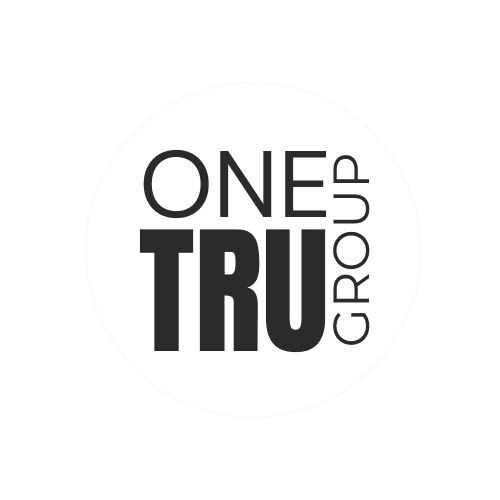What are OKRs?
Objectives and Key Results (OKRs) represent a framework widely utilized by organizations to define goals and track their outcomes. The fundamental purpose of OKRs is to ensure alignment of objectives across various levels within an organization, fostering a culture of transparency and accountability. Through clearly defined objectives and measurable key results, teams can focus on what truly matters, leading to enhanced performance and productivity.
The origins of OKRs date back to the 1970s, when they were popularized by Intel’s co-founder, Andy Grove. His approach was considerably influenced by the management principles of Peter Drucker, which emphasized the importance of setting specific and measurable goals. Since then, the OKR framework has evolved and gained traction in numerous companies, most notably Google, which implemented it in the early 2000s. This adaptation by tech giants solidified OKRs as a best practice in performance management and strategic planning.
At its core, an OKR consists of an objective — a clearly defined goal that is intended to be achieved within a specific time frame — and several key results, which serve as measurable indicators of progress towards that goal. The simplicity of this structure allows for flexibility and encourages teams to be ambitious while remaining accountable for their performance. As a result, organizations employing OKRs can create a conducive environment for growth and innovation. This framework is particularly relevant in the current business landscape, where companies are increasingly looking toward outsourcing and business process outsourcing (BPO) solutions to gain a competitive edge. Leading firms, such as those in Ortigas or call centers in the Philippines, have recognized the importance of OKRs in recruiting talent and optimizing operations to achieve their strategic objectives. By leveraging OKRs, organizations can align their vision with execution, leading to sustained success.
Components of OKRs
The framework of OKRs, which stands for Objectives and Key Results, consists of two fundamental components that work synergistically to drive organizational success. Understanding these elements is crucial for any business, including those in the outsourcing sector, such as the top BPOs in Ortigas or call centers in the Philippines.
Firstly, Objectives refer to the specific, measurable goals that an organization aims to achieve within a defined time frame. Effective objectives possess several characteristics: they should be valuable, meaning they contribute to the organization’s broader mission; they must be actionable, allowing teams to implement them effectively; and they should inspire individuals within the organization to strive for exceptional performance. For example, a telecom BPO might set an objective of increasing customer satisfaction within the next quarter, aiming not solely for numbers but also for a significant shift in client experience.
On the other hand, Key Results are the specific, quantifiable metrics used to measure progress towards achieving each objective. They are designed to be results-oriented and often include numeric milestones, which allow teams to objectively determine their success. For instance, the telecom BPO might outline key results such as achieving a Net Promoter Score (NPS) of 75 or reducing average response time to customer inquiries to under 10 minutes. Effective key results are often straightforward and focused, enabling all stakeholders to monitor advancements easily and align their efforts seamlessly.
In integrating these elements, organizations can establish a clear direction while providing measurable outcomes that ensure accountability among their teams. As industries continue to evolve, particularly in outsourcing, understanding and implementing OKRs can foster enhanced operational efficiency and drive significant results for businesses worldwide.
Benefits of Implementing OKRs
Organizations increasingly recognize the value of implementing OKRs (Objectives and Key Results) as a strategic framework to drive performance and facilitate growth. One of the primary benefits is improved alignment within teams. By defining clear objectives and measurable results, all employees gain a shared understanding of the organization’s goals. This shared clarity encourages collaboration and helps eliminate potential silos, as teams work in concert towards overarching objectives.
Furthermore, OKRs promote accountability among team members. Each objective is linked to specific key results, making it easier for individual contributors to understand their responsibilities. As employees track progress against these results, they develop a heightened sense of ownership over their work. This accountability fosters a culture that prioritizes results and empowers staff to contribute meaningfully to the organization’s goals.
Another significant advantage of implementing OKRs is the enhanced visibility into organizational performance. By continuously monitoring progress against objectives, management can identify which strategies are working and which require adjustment. This real-time insight allows leaders to make informed decisions, facilitating agile responses to market changes or operational challenges. Moreover, this level of transparency ensures that everyone involved, including outsourcing partners or entities such as the top BPO in Ortigas, can stay informed and effectively contribute to the success of the organization.
Moreover, OKRs serve to motivate employees by creating a results-oriented culture. When individuals see how their efforts directly impact the organization’s objectives, it can boost morale and engagement. This intrinsic motivation enhances performance and leads teams to strive for excellence, driving improved business outcomes overall. In fostering an environment rooted in shared goals and collective achievement, organizations that adopt OKRs can expect to see significant positive changes in their operational success.
Best Practices for Using OKRs
Implementing Objectives and Key Results (OKRs) effectively requires a strategic approach, as they serve as a vital framework for aligning an organization’s goals with measurable outcomes. One of the first best practices is to ensure that the OKRs set are both realistic and measurable. This means that objectives should be aspirational but attainable, while key results should provide clear metrics to assess progress. For instance, instead of a vague goal such as “improve customer service”, a more effective objective would be “increase customer satisfaction score from 75% to 85% within Q1.”
Regular check-ins and updates are essential for maintaining the momentum of the OKR process. Weekly or bi-weekly meetings can significantly enhance transparency and allow teams to discuss their progress, challenges, and necessary adjustments. This process fosters a culture of accountability and ensures that objectives remain relevant and top-of-mind. It is crucial that stakeholders communicate openly during these check-ins to identify if any changes in priorities require adjustments to the objectives, especially as business contexts shift, such as through outsourcing initiatives or changes in market demand.
Another common challenge within the OKR framework is the tendency for organizations to become rigid in their planning. To overcome this, teams must prioritize flexibility in their approach. OKRs should not be viewed as static goals; instead, they should evolve with the organization’s needs. Regularly reviewing and revising OKRs can help teams adapt to new information, pivot strategies, and align their efforts, whether those involve internal projects or involve engaging top BPO in Ortigas or call center in the Philippines.
By following these best practices, organizations can effectively implement OKRs, ensuring that the objectives align with the broader strategic vision while driving measurable outcomes that foster growth and innovation.





